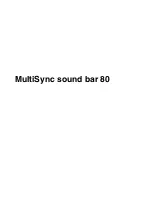
13
Wiring Connections
WARNING
!
Isolate the power supply before accessing unit
electrical terminals.
Install unit so that unit disconnect is accessible.
Follow all local and national codes, as well as this
installation instruction, during installation. Do NOT
overload electrical circuit, as this may lead to failure
and possible fire.
Use specified wiring and cable to make electrical
connections. Clamp cables securely and make sure
that connections are tight to avoid strain on wiring.
Insecure wiring connections may result in equipment
failure and risk of fire.
Wiring must be installed so that all cover plates can
be securely closed.
In the U.S.A., wiring must conform with current local codes
and the current National Electric Code (NEC). In Canada,
wiring must conform with current local codes and the current
Canadian Electrical Code (CEC). Refer to unit nameplate
for minimum circuit ampacity and maximum overcurrent
protection size.
NOTE - Three-conductor shielded cable must be used for
the communication wiring. This is necessary to ensure
proper system communication and operation.
CAUTION
!
This unit must be properly grounded and protected
by a circuit breaker. The ground wire for the unit must
not be connected to a gas or water pipe, a lightning
conductor or a telephone ground wire.
Do not connect power wires to the outdoor unit until
all other wiring and piping connections have been
completed.
Install all wiring at least 3 feet away from televisions,
radios or other electronic devices in order to avoid
the possibility of interference with the unit operation.
Do not install the unit near a lighting appliance that
includes a ballast. The ballast may affect remote
control operation.
Tightening torque for the terminal screws
•
Use the correct screwdriver for fighting the terminal
screws. If the screwdriver blade is too small, the head
of the screw might be damaged, and the screw will not
be properly tightened.
• If the terminal screws are over tightened, screws might
be damaged.
• Refer to the table below for the tightening torque of the
terminal screws.
A disconnection device having an air gap contact
separation in all active conductors should be
incorporated in the fixed wiring according to the
National Wiring Regulation.
CAUTION
!
Table 3. Terminal Screw Tightening Torque
Tightening torque (lb-ft)
Terminal base of
remote controller/Signal
transmission wire (X2M)
0.58-0.72
Terminal base of power
supply (X1M)
0.87-1.06
Grounding terminal (M4) 1.06-1.43
•
After wiring, confirm all connections are correct; Then
turn on power supply to the unit.
1.
Pull the return air filter grille forward and remove the
filters.
2. Remove one screw from each safety strap assembly
(one on each side) and remove return air grille.
3. Locate the control box in the center of the unit, below
and behind the fan motor.
4. Remove the two screws holding the control box onto the
motor mounting bracket, and the screw at each end of
the control box holding securing the box to the chassis
of the unit. Lower the control box to obtain access to
cover.
5. Remove the screws securing the cover and remove
cover from control box.
6. Locate the terminal strip in the control box. Connect the
power wiring (sized per NEC/CEC and local codes)
and communications cable (three-conductor shielded
cable) per figures 12 and 13. Refer to unit nameplate
for rated voltage.
7.
If the indoor unit is the final unit in a group that is wired
in series, install the provided resistor across terminals P
and Q. See figure 14.
• A circuit breaker capable of shutting down the power
supply to the entire system must be installed.
• A single switch can be used to supply power to units on
the same system. However, branch switches and circuit
breakers must be selected carefully.
• Fit the power supply wiring of each unit with a switch
and fuse as shown in the wiring diagram.
• Install a wiring interrupter or ground-fault circuit
interrupter for the power wiring.
• Make sure the ground resistance is no greater than
100Ω. This value can be as high as 500Ω when using
a grounding fault circuit interrupter since the protective
ground resistance can be applied.









































